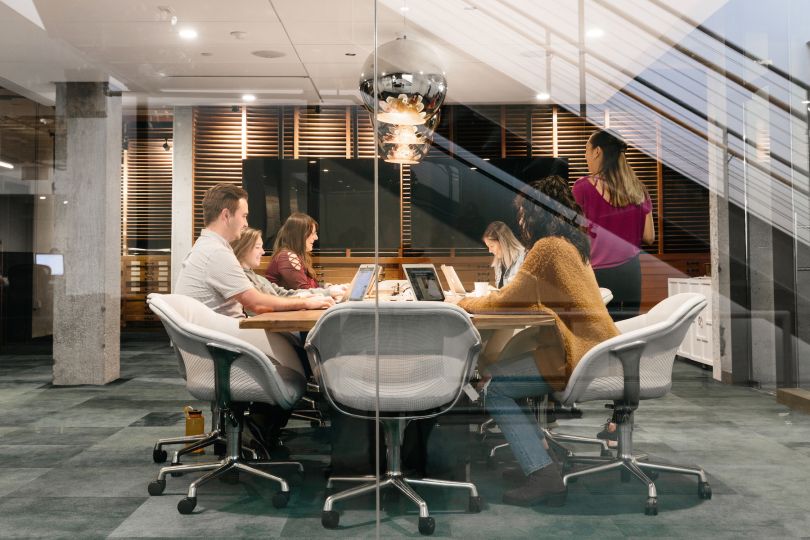Most large organizations have a C-suite packed with big personalities — the bright and nerdy CTO, the CFO controlling the purse strings, the creative CMO, the CEO holding the reins and so on.
Less famous is the Chief Information Officer, a role that has changed over the decades. Once the designated tech expert tasked with “keeping the lights on,” CIOs have become forecasters who look for new technological trends that may give their organization an edge in the future. That trend has largely been driven by the business operations’ migration from on-premise networks to cloud-based services, wireless communications and mobile devices.
The CIO role stands at the junction between business requirements, user needs and the back-end technology that undergirds the company as a whole. Budgeting and policy development are also key skills in this role.
San Francisco cloud pioneer Dropbox hired its first ever CIO in 2017 — Sylvie Veilleux, who has led IT, engineering and infrastructure teams at Mozilla, Salesforce, Apple and plenty of other recognizable Silicon Valley stalwarts over a long career.
So what role does a CIO play in a large, modern organization like Dropbox? In an interview with Built In, Veilleux described the ways in which her team promotes productivity — an area that overlaps with the products Dropbox sells to its customers — and keeps the company humming.
What prompted Dropbox to bring on a CIO, and what about the role interested you?

I’ve enjoyed working at storied brands and companies across the world and Dropbox was an amazing opportunity to help a high-growth company scale pre-IPO to now. I was initially brought on to build a team to help enable growth and mature our internal business technologies and services. This was a rare opportunity, where I could build out a forward-looking organization, which I call the “IT organization of the future,” and partner closely with teams across the business.
At Dropbox, my responsibilities have run the gamut. I created the first centralized IT organization, built out critical financial and go-to-market systems, established key governance programs, deployed new business intelligence and data strategy and platforms and deployed best-of-breed solutions for our employees.
Before I joined, I saw Dropbox as a pioneer of the “file, sync and share” category allowing people to work more seamlessly. People now still think Dropbox as a folder full of files and content, and we’ve been working hard to build the world’s first smart workspace, another category of technology that is designed to give people more focus no matter where and how they work. We’ve been doing that by building a neutral app where people can go and use the tools they love.
“Ultimately, the success of our products — created by all of our engineering, product and designs teams — is rooted in the strength of our product platforms which includes the network, hardware and data center platform.”
The average IT department spends just 19 percent of its budget on building new capabilities. How do you balance innovation with the need to drive revenue and keep costs in check?
I’m incredibly proud of how the IT organization has developed and matured in just a few short years. Everything we do is closely tied with company objectives, which go hand-in-hand with balancing innovation and building new capabilities for our customers and employees.
In fact, the IT budget is shaped so that we have buckets that map to how they impact company growth and bottom line. We also make sure we have the resources to enable innovation while also improving our operational efficiencies.
Part of enabling innovation is establishing an agile platform and taxonomy, which creates transparency around what IT is working on and how it maps back to company goals. At any point in time we can understand IT’s current investment allocations and the ability to re-balance our work as necessary.

When exploring new technologies, how do you strike a balance between the needs of Dropbox’s software engineers and hardware engineers?
Ultimately, the success of our products — created by all of our engineering, product and designs teams — is rooted in the strength of our product platforms which includes the network, hardware and data center platform.
When investing in new technologies for our engineers, we aim for productivity and reliability and velocity.
On the infrastructure side we build fully integrated software and hardware platforms for areas like storage and we need to find efficiencies that drive the business like shingled magnetic recording, active matrix displays, post office protocols, Clos fabrics and so on.
How do you evaluate and incorporate new technology into your business or products? What technologies are you currently keeping an eye on?
We think there’s a lot of opportunity to make the work-from-home experience even better, so we’ll continue looking at best-of-breed technologies for our employees and our customers.
Our work on creating the Smart Workspace is like having an automatic assistant that helps you organize and prioritize the information you need right then and there. This delivers a personalized experience that can help people cut through the clutter.
From an internal technology perspective, SaaS is in our DNA so it’s natural for us to look toward cloud technologies. IT organizations are heavily adopting cloud and achieving benefits far faster than their counterparts not heavily invested in SaaS.
At Dropbox, IT has a strategic effort that is focused on something I call “managing SaaS at scale.” This includes the management of administration, security and costs in an effective and efficient way, plus access to insights to better understand our employees’ productivity and engagement with the SaaS solutions they are using or have access to. As with our product, we want to reduce the interruptions and create greater flow and focus for our employees.



